IMDEA Networks

Archives: Events
Security and non-cooperative behavior in wireless networks
According to most technology pundits, progress in wireless and sensor networks will lead us into a world of ubiquitous computing, in which myriads of tiny, untethered sensors and actuators will communicate with each other. Information technology will thus deliver its most encompassing and pervasive accomplishment to mankind, promptly taking care of the needs and wishes of everyone.
Read more arrow_right_altAnalysis and Experimental study of operational 802.11-based Wireless Mesh Networks
The performance of IP flows in Wireless Mesh Networks is unfairly biased by the unplanned compounding behavior of MAC and transport protocols. This compounding protocol behavior can undesirably result in complete starvation of some flows and in consistent capacity reductions originated by, e.g., limited volumes of control traffic.
Read more arrow_right_altThe pain of doing research with real (wireless) devices
A lot of attention has been given to multihop wireless networks lately. This attention has motivated an increase in the number of 802.11-based deployments, both indoor and outdoor, used to perform measurement studies to analyze WLAN performance by means of wireless sniffers that passively capture transmitted frames. In this talk talk we will introduce some of the major issues that systems researchers have to address when performing such measurements: i) on one hand, the testbed itself requires a significant amount of resources during both its deployment and its maintenance, and they require a "calibration" phase before running the experiments given that as off-the-shelf devices have recently been shown to deviate from the expected behavior--in this talk we summarize a few lessons learned from the deployment of a 28-node wireless testbed; ii) on the other hand, little attention has been given to the fidelity of an individual device, i.e., the ability of a given sniffer to capture all frames that could have been captured by a more faithful device. We assess this fidelity by running controlled experiments, and show that it varies significantly across sniffers, both quantitatively and qualitatively.
Read more arrow_right_altInformation and Communications Technologies and the challenge of energy efficiency
The steadily raising energy costs and the increasing number of evidences of climate changes induced by high levels of CO2 in the atmosphere have brought the issue of a sustainable use of energy to the attention of governments and of people all over the world. The need for a more responsible use of energy has emerged in all sectors, together with the awareness that a decrease in carbon emissions is vital to ensuring a future to mankind. The ICT sector, which has brought deep transformations and a rapid increase in productivity in many domains in the last decades, is at the center of this transformation. In all fields of communications, researchers have started to investigate approaches to reduce energy consumption, both by designing new devices, and by exploring new network architectures. In particula r, dynamic network planning, which implies decreasing the power consumption of those network resources which are underutilized, is seen as one of the most promising techniques to improve the energy efficiency of networks.
Read more arrow_right_altCharacterizing the Behavior of Content Publishers in BitTorrent
Due to the increasing popularity of P2P systems and their contribution to overall Internet traffic, it is essential to understand how content, which is the main attraction in P2P systems, is fed. The main goal of this talk is to identify and characterize those communities of users that are primarily responsible for publishing/feeding content in BitTorrent. For this purpose we have performed two large scale measurement studies that collectively identify the feeders of more than 30k torrents. Out of these measurements we conclude that a significant part of the BitTorrent’s content (40%) is fed by two different groups: (i) users concentrated min a few IP addresses of Hosting Service Providers. In particular, there is a single Hosting Provider in this community that alone is responsible of feeding 25% of the content published in the current major BitTorrent Portal. (ii) A large number of regular BitTorrent users spread across the networks of big ISPs. In addition, we characterize how the feeders of both communities behave, finding out that the typical Hosting Providers feeder (i) publishes a larger number of torrents that become more popular and (ii) seeds longer its torrents than regular users acting as feeders. Our findings suggest that a small group of users in Hosting Providers effectively leverage BitTorrent to publish content. Therefore, their presence is essential for the livelihood of BitTorrent.
Read more arrow_right_altBinary Program Analysis and Model Extraction for Security Applications
In this talk I present a platform to extract models of security-relevant functionality from program binaries, enabling multiple security applications such as active botnet infiltration, finding deviations between implementations of the same functionality, vulnerability signature generation, and finding content-sniffing cross-site scripting (XSS) attacks.
In this talk, I present two applications: active botnet infiltration and finding content-sniffing XSS attacks.
CacheCast: Eliminating Redundant Link Traffic for Single Source Multiple Destination Transfers
His talk consists out of two parts. The first part will give an overview on the current research activities and achievements of the Distributed Multimedia Systems Research Group at the University of Oslo. This includes video streaming in MANETs and disruptive environments, publish subscribe for sparse MANETs, deviation detection with complex event processing for automated home care systems, and clean-slate Future Internet research work. The second part will focus on CacheCast, which is joint work with Lancaster University and has been initiated in the Content NoE. Due to the lack of multicast services in the Internet, applications based on single source multiple destinations transfers such as video conferencing, IP radio, IPTV must use unicast or application layer multicast.
Read more arrow_right_altWho are good parents?
Nowadays it is possible to watch some TV channels in the Internet using P2P mechanisms. There are basically two ways to construct a P2P network to transmit streaming video: mesh-based and tree-based (there is also a mix of both called hybrid-based). No matter how we construct the overlay, a fundamental problem is: what is the best peer to connect with, in order to obtain the best performance? This question is even more important in the tree-based P2P networks where there is just one connection between a "parent" peer and each one of its children, so, the leaving of a parent forces all its children to reconnect to other parents. Our goal in this study is to minimize the number of orphan peers per minute, i.e. select a parent who minimizes the probability of leaving before a given peer. In order to do that, it is necessary to have other results like the distribution of the channel holding time per peer, the future lifetime of a peer given its elapsed time in a given channel and other stuff that will be described during the presentation.
Read more arrow_right_altOverview of the IEEE 802.21 standard and its future steps
The conference will be conducted in English
Read more arrow_right_altPhD Defense: Dynamic and Location-Aware Server Discovery based on fair DHTs
The current Internet includes a large number of distributed services. In order to guarantee the QoS of the communication in these services, a client has to select a close-by server with enough available resources. In order to achieve this objective, in this Thesis, we propose a simple and practical solution for Dynamic and Location Aware Server Discovery based on a Distributed Hash Table (DHT). Specifically, we decide to use a Chord DHT system (although any other DHT scheme can be used). In more detail, the solution works as follows. The servers offering a given service form a Chord-like DHT. In addition, they register their location (topological and/or geographical) information in the DHT. Each client using the service is connected to at least one server from the DHT. Eventually, a given client realizes that it is connected to a server providing a bad QoS, then, it queries the DHT in order to find an appropriate server (i.e. a close-by server with enough available resources). We define 11 design criteria, and compare our solution to the State of the Art based on them. We show that our solution is the most complete one. Furthermore, we validate the performance of our solution in two different scenarios: NAT Traversal Server Discovery and Home Agent Discovery in Mobile IP scenarios. The former serves to validate our solution in a highly dynamic environment whereas the latter demonstrates the appropriateness of our solution in more classical environments where the servers are typically hosts.
Read more arrow_right_alt



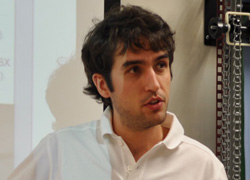
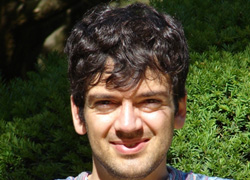
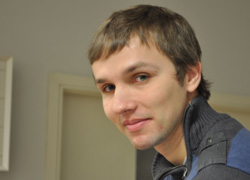

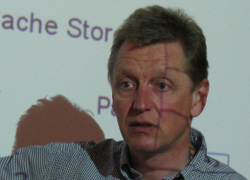
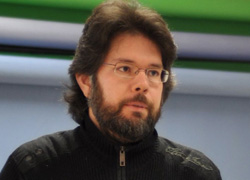

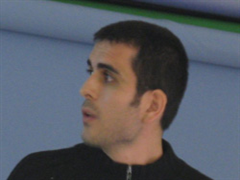
Recent Comments